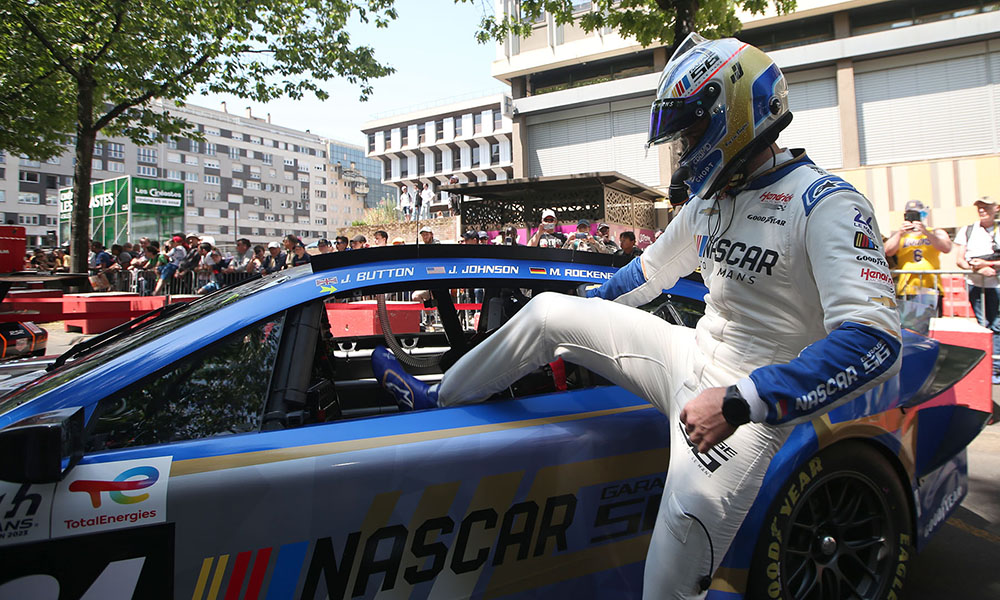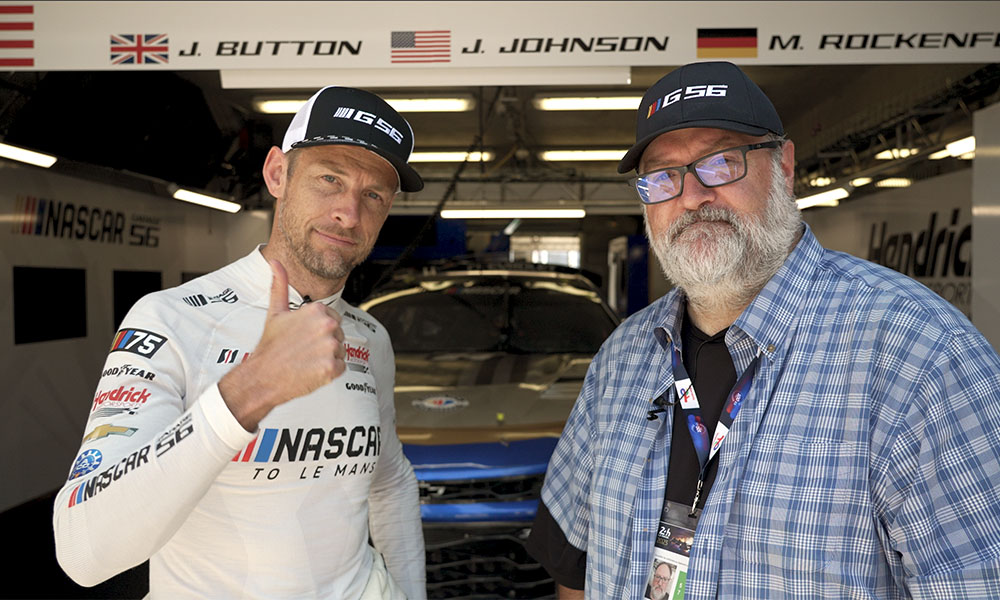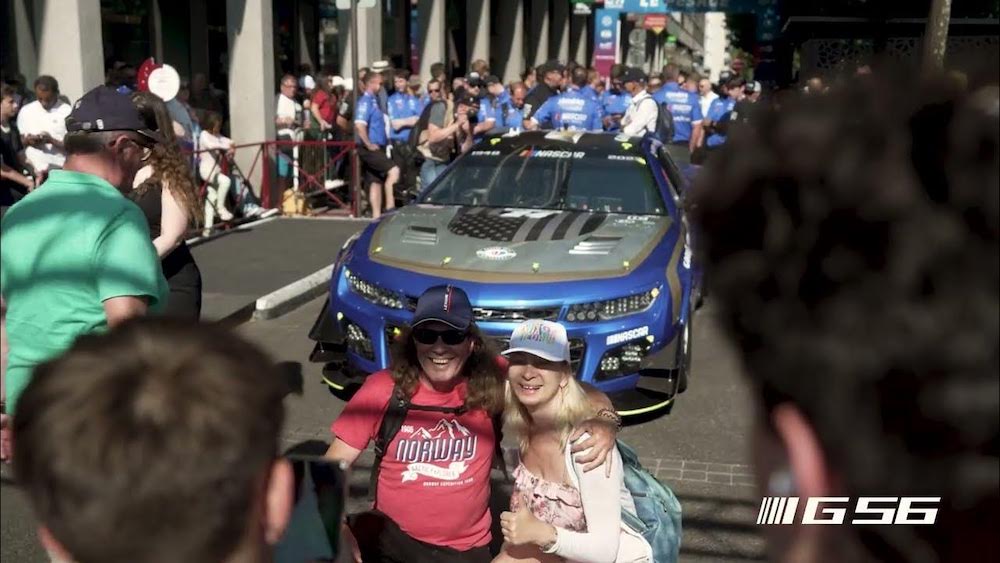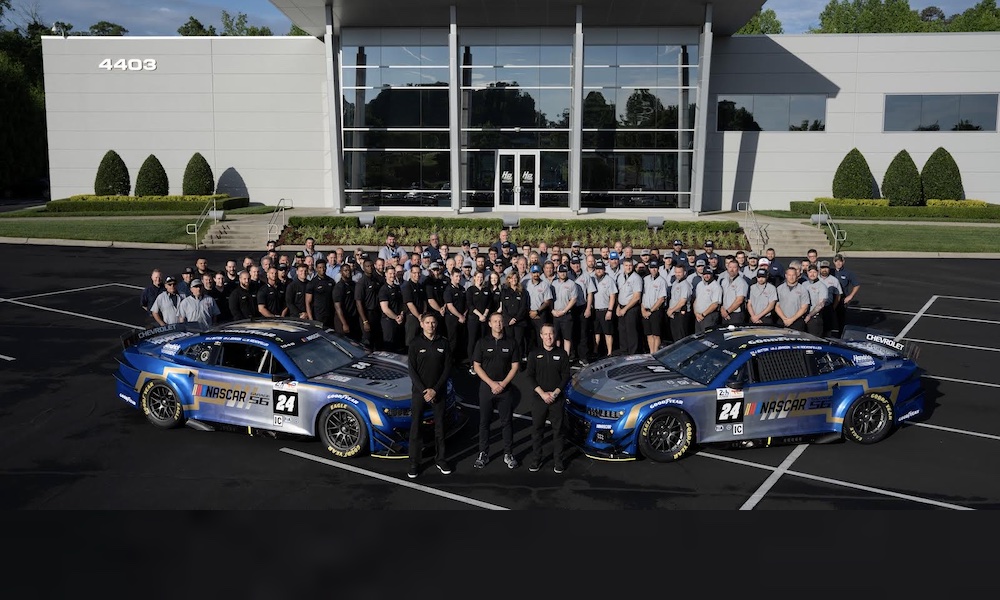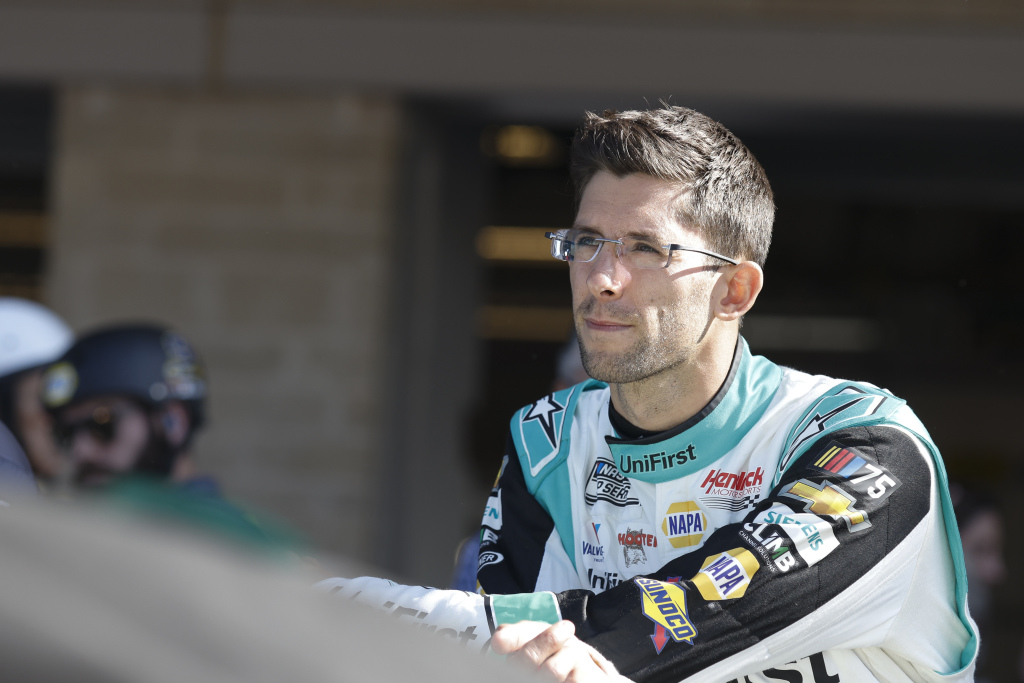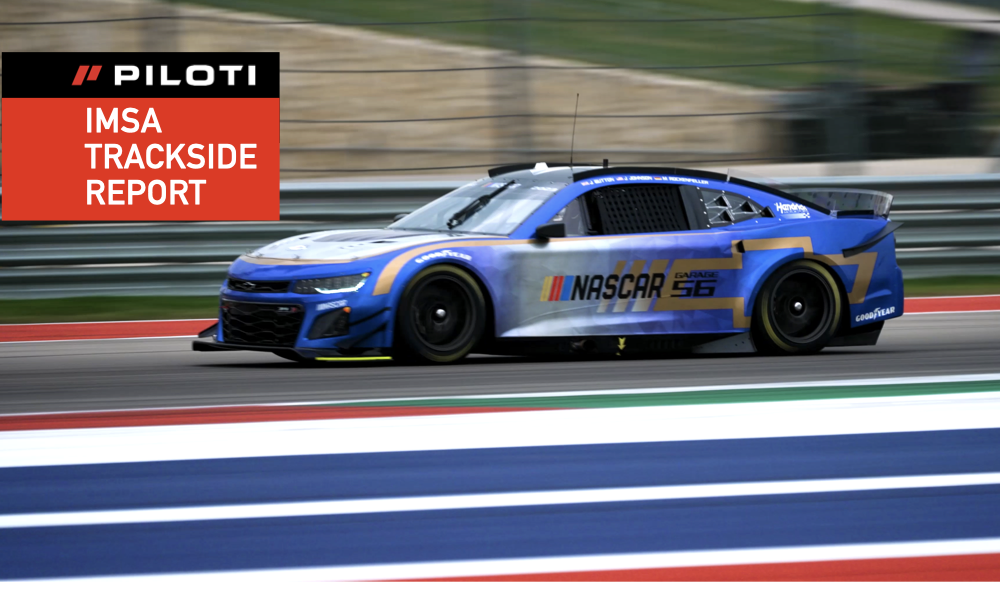Energy. Enthusiasm. Passion for the product. Those are the qualities that convinced NASCAR and IMSA Chairman Jim France and IMSA CEO Ed Bennett that John Doonan was the right man to serve as President of IMSA.
Doonan, the former director of motorsports for Mazda North America, joined IMSA in October 2019, and since then, he has played a key role in creating IMSA’s successful new Grand Touring Prototype (GTP) class. He also strengthened an alliance with the Automobile Club d’Ouest that has created convergence between IMSA and the international sports car racing community.
France more recently tabbed Doonan to lead a special project that is very close to France’s heart. In 1976, France’s father, NASCAR founder Bill France, hatched a plan to enter a pair of Cup Series cars in the 24 Hours of Le Mans. Both cars (a Ford Torino fielded by Junie Donlavey and a Dodge Charger run by Herschel McGriff) failed to make the halfway point of the race, but the uniquely American entries created a strong impression at the historic event and forged a lasting memory for Jim France.
Now, in an effort to boost NASCAR’s international presence and demonstrate the versatility of the Next Gen Cup Series car, France proposed revisiting the events of 1976 by preparing a modified Cup car for Le Mans as the classic endurance event’s “Garage 56” category, an invitational entry intended to showcase new or unusual technology. Chevrolet, Hendrick Motorsports, and Goodyear were recruited as partners for the project, and Doonan was asked to be the project leader of the effort.
[lawrence-related id=325588]
“In 1976, NASCAR at the time was really strong in the southern U.S. and starting to continue out west, but Mr. France felt it needed more global recognition,” Doonan notes. “The cars were not built to FIA standard at the time, but it was a chance to go over there and try to introduce what was gaining traction here in the States to an international audience. It was the chance to put a stake in the ground and say, ‘Hey, NASCAR is real. Give it a look.’
“Fast forward, the current NASCAR Cup car is a far more versatile and modular car,” he continued. “It’s a lot like the GT cars that run in IMSA or at Le Mans, relative to design and engineering. Jim felt like it was an optimal time to recreate what his dad did and put NASCAR further onto a global stage that can showcase the new car in a manner that might catch the eyes of some of the other manufacturers. I hope the other OEMs come and see there is a huge opportunity with NASCAR and its new car with more road courses.”
As the most successful manufacturer in NASCAR history, Chevrolet was an obvious choice, and Hendrick Motorsports has emerged as the lead Chevrolet NASCAR team over the past 30 years. Similarly, Goodyear’s relationship with NASCAR dates to the 1950s.
Doonan’s task was to ensure that these separate entities came together in pursuit of a common goal, and to assemble a compelling driver lineup that would resonate with American and international race fans. The drivers ultimately chosen were seven-time NASCAR Cup Series champion Jimmie Johnson, 2009 Formula 1 world champion Jenson Button and versatile sports car ace Mike Rockenfeller, a two-time Le Mans winner, including overall honors in 2010.
“A lot of my role and responsibility is bringing all the partners together, aligning with the ACO, and then finding a driver lineup that also achieved what Jim had hoped for — a group of folks that are well known globally and domestically, who can further our messaging based on their reach,” Doonan says. “The three of them came together like they went to school together as little kids. They’ve really jelled and embraced the project for what it is.
“Everyone has come together so well, and it’s been a lot of fun,” he added. “(IMSA and Corvette factory driver) Jordan Taylor is a coach for the drivers, and I feel like I’ve just been a coach for trying to get the various partners communicating.”
Doonan has certainly made a strong impression on the members of the Garage 56 team. Like Rockenfeller, a veteran of factory Le Mans programs for Audi, Porsche, and Corvette Racing.
“John, for me, is a perfect fit,” Rockenfeller said. “There’s a reason Jim France and his folks put John in that position. I knew him a little when he was running Mazda, but I’ve really gotten to know him well with Garage 56.
“I have to say, the positivity, the smile, the energy he brings all the time, is amazing. He pushes everybody, but is very friendly, very kind, and appreciates stuff. But he also moves things in the right direction. This is a huge project, with great partners. It’s kind of a crazy idea if you think about it, to take NASCAR to Le Mans. But John is absolutely the right guy to lead the effort.”
 The Garage 56 entry, which will run as No. 24 — a number traditionally associated with Hendrick — required surprisingly little in the conversion from stock car to endurance racing sports car. The car gained real headlights and taillights, as well as some subtle aerodynamic modifications to increase downforce. The engine is essentially the same iron small-block V8 used in the Cup Series, adapted for the rigors of 24 hours of consecutive running. The car is roughly 500 pounds lighter than a standard Cup car.
The Garage 56 entry, which will run as No. 24 — a number traditionally associated with Hendrick — required surprisingly little in the conversion from stock car to endurance racing sports car. The car gained real headlights and taillights, as well as some subtle aerodynamic modifications to increase downforce. The engine is essentially the same iron small-block V8 used in the Cup Series, adapted for the rigors of 24 hours of consecutive running. The car is roughly 500 pounds lighter than a standard Cup car.
Like a Cup car, the Garage 56 car does not have doors; driver changes will be executed through the window, NASCAR-style. In an unusual twist, the ACO insisted on using traditional NASCAR hand jacks for tire changes rather than an air jack system engineered into the car.
“There’s no doubt it’s a tall task to finish the race with this car,” observes Doonan. “We’ve tested seven different times at a variety of circuits, most notably a 24-hour test at Sebring that went really, really well. I think we’re cautiously optimistic the car will achieve what it was set out to do. ‘Finish the race,’ Mr. France said, ‘but don’t finish last.’”
Indeed, the goal for Garage 56 is not to win the 24 Hours of Le Mans. This is a project intended to build bridges and strengthen relationships, all while hopefully boosting NASCAR’s image on an international basis. But IMSA stands to benefit as well.
“I think this is an additional step towards showing the world what NASCAR racing is all about, what the fans over here have loved for 75 years,” Doonan says. “Steve Phelps (NASCAR president) has said over and over that NASCAR is going to do some bold things. L.A. Coliseum, Chicago street race, North Wilkesboro…my hope all along has been that this can be part of that. It’s putting NASCAR on additional people’s radar. It’s a great time for NASCAR, and to have this happen during the 75th anniversary celebration for NASCAR and the 100th anniversary of Le Mans adds a historical perspective on the whole thing that I love.
“For IMSA, it’s an extension of the relationship with the ACO,” he continues. “It adds to what we’ve tried to do with bringing the top category together, and now the fact that they (the FIA World Endurance Championship) will run GT3 cars in the future as well. I think this is maybe another spoke in that wheel of partnership with the ACO.”
The Garage 56 project has been very personally satisfying for Doonan, giving him a chance to revisit previous experiences as a grassroots racer who ultimately rose to a powerful position in the motorsports world. Under Doonan’s guidance, Mazda grew into the most popular brand in American road racing.
“I feel like I’m back in the race team side of the sport, and a huge part of me is going to miss this project when we reach the checkered flag on Sunday, June 11,” Doonan said. “I grew up at the racetrack; I’ve been a racer all my life. This project gave me a chance to go back to rooting for a specific car in a race, so it’s given me a little boost of energy and excitement to be back on that side.
“But the men and women who have executed this thing are the real heroes of the project. It’s been a total blast and I feel like I’ve gained a whole new batch of friends. There’s no doubt that has been the most rewarding aspect. It’s a historic moment for NASCAR, and I’m super proud of the opportunity to be part of it.”
